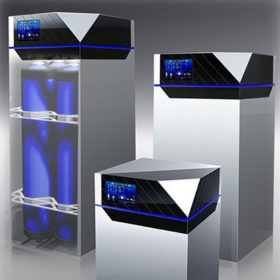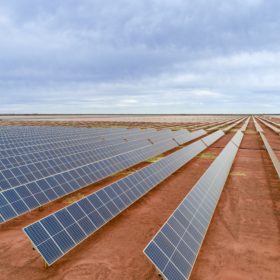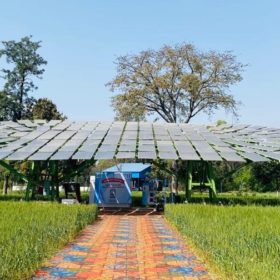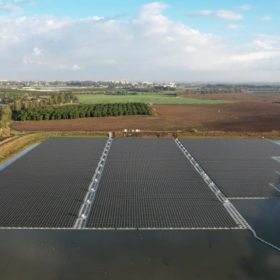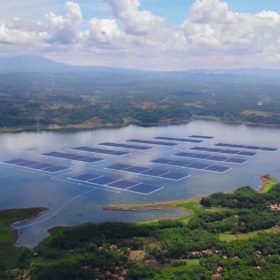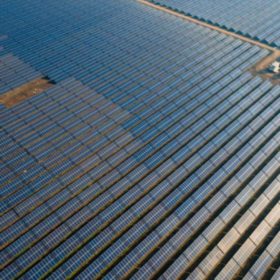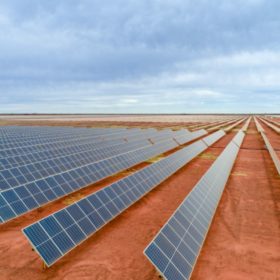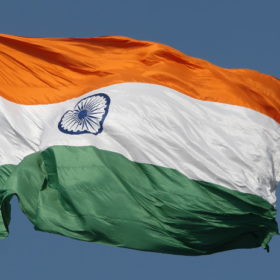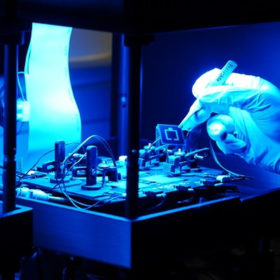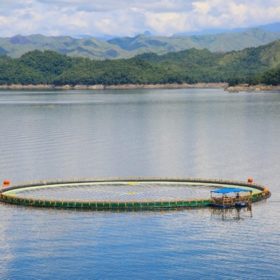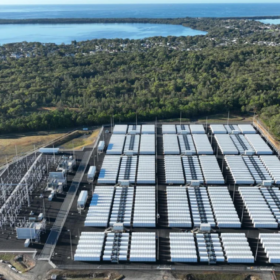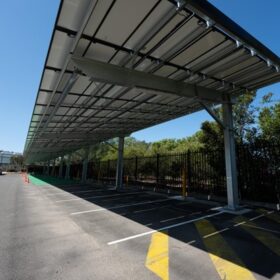Toyota develops new module to store, transport hydrogen
Japanese automaker Toyota has used its hydrogen tank tech in a new module to expand hydrogen storage to railways, shipping facilities, cargo ports, and fuel cell generators. Its 70MPa tank has a storage capacity of 2.7 kg to 18.7 kg and a tank mass ranging from 43.0 kg to 243.8 kg, depending on the size.
Territory government ramps up support for 20GW solar and battery project
The world’s largest solar PV and battery energy storage project has locked in renewed political support with the Northern Territory government confirming it will introduce special legislation into parliament this week that will facilitate the development of the giga-scale Australia-Asia PowerLink project.
World’s largest solar tree record smashed
With a PV panel surface area of 309.83m2, the solar tree is officially certified by Guinness World Records (GWR) as the largest solar tree in the world.
Floating solar-plus-hydroelectric project planned on Indian dam
Renewable energy developers have until April 25 to lodge interest in developing a hybrid facility combining 1.5MW of hydroelectric generation capacity and 100MW of floating solar in the state of Maharashtra.
Weekend read: Made in Indonesia
Indonesia has set itself some ambitious goals for PV manufacturing, backed by domestic content requirements and other incentives. But local demand is limited, and the nation faces stiff competition from China and other countries on the export market. While real obstacles remain, a restructuring of state-owned electricity company PLN and local raw material riches mean the potential is growing.
India surpasses 50GW of solar
In the fourth quarter of 2021 alone, solar developers added 3.2GW of new PV installations in India.
World’s biggest solar-plus-battery project gets $210m funding boost
Sun Cable’s ambitious plans to build the world’s largest solar PV and battery energy storage project in Australia’s remote far north are a step closer to fruition after two of the nation’s richest men provided their backing for a $210 million capital raise.
Indian green hydrogen will cost $5/kg
Ratings agency ICRA has estimated Indian green hydrogen will cost that much if produced at sites featuring clean energy generation capacity and electrolysers. That is between US$0.5–$1 per kilogram cheaper than in locations where the two systems are not co-located, with the saving possible due to a reduction in open-access, intra-state grid charges.
Q Cells, German researchers claim 28.7% efficiency for 2T perovskite-silicon tandem solar cell
The Korean manufacturer and the German research centre were able to improve the performance of their jointly developed tandem solar cell by almost one percentage point.
Philippine irrigation body offers up sites for floating solar
With senators having called for plantation-wide solar powered pumping projects, funded by public money, the country’s National Irrigation Administration has agreed and said it wants to embrace floating solar facilities too.
